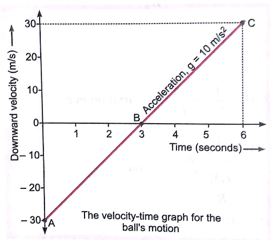Gravitation
Que 1. Why does formation of tides takes place in sea or ocean?
Ans. The tides in the sea formed by the rising and falling of water level in the sea are due to the gravitational force of attraction which the sun and the moon exert on the water surface in the sea.
Que 2. Why does a body orbiting in space possess zero weight with respect to a spaceship?
Ans. The astronaut and the spaceship are orbiting with same acceleration hence, the body does not exert any force on the sides of the spaceship. Therefore, the body appears to be floating weightlessly. It also implies that a body orbiting in space has zero weight with respect to a spaceship.
Que 3. Identical packets are dropped from two aeroplanes-one above the equator and other above the north pole, both at height h. Assuming all conditions to be identical, will those packets take same time to reach the surface of earth? Justify your answer.
Ans. The value of 'g' at the equator of the earth is lesser than that at poles. Therefore, the packets fall slowly at equator in comparison to the poles. Thus, the packets will remain in air for longer time interval, when it is dropped at the equator.
Que 4. How does the force of attraction between the two bodies depend upon their masses and distance between them? A student thought that two bricks tied together would fall faster than a single one under the action of gravity. Do you agree with his hypothesis or not? Comment.
Ans. 
Que 5. Velocity-time graph for the ball's motion is shown in figure.

Observe the graph and answer the following questions.
Assume that g = 10 m/s2 and that there is no air resistance.
(a) In which direction is the ball moving at point C?
(b) At which point is the ball stationary?
(c) At which point is the ball at its maximum height?
(d) what is the ball's acceleration at point C?
(e) What is the ball's acceleration at point A?
(f) What is the ball's acceleration at point B?
(g) At which point does the ball have the same speed as when it was thrown?
Ans. (a) Downward (b) At point B
(c) At point B (d) Acceleration =10 ms-2
(e) Acceleration = -10 ms-2 (f) Acceleration =10 ms-2
(g) At point C

